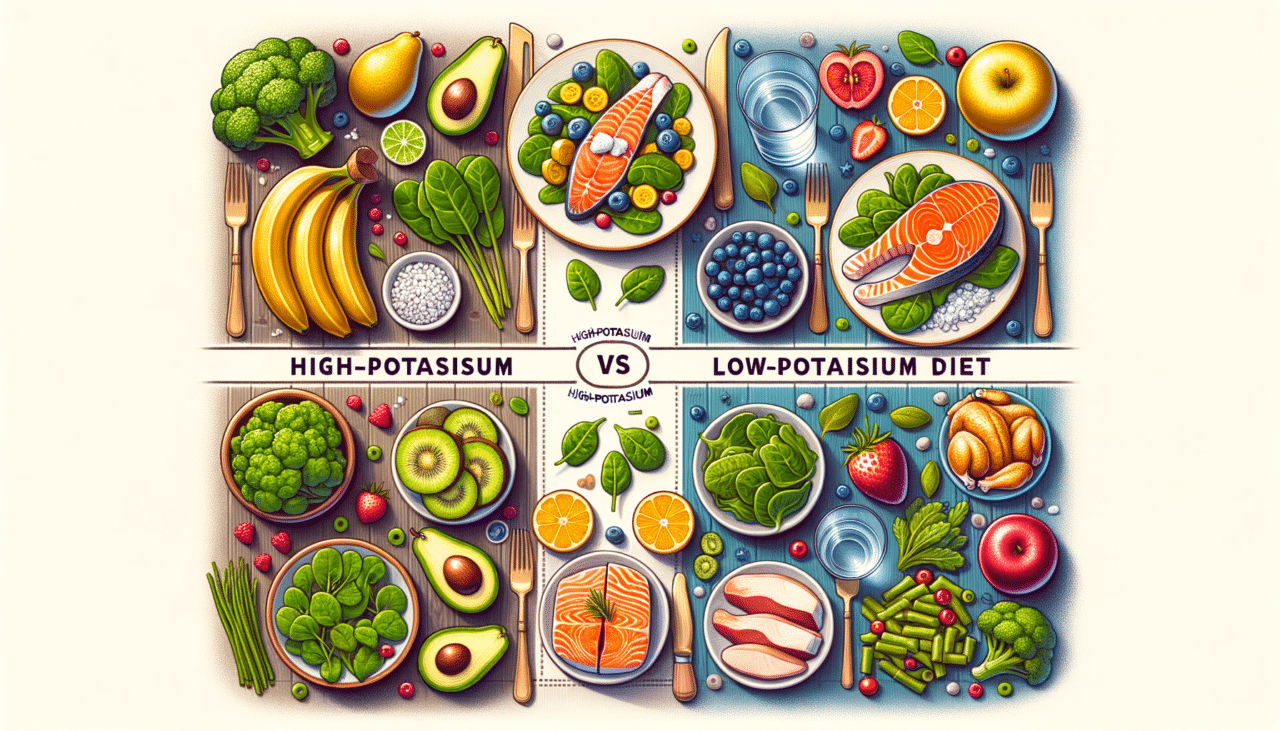High-Potassium Diet vs. Low-Potassium Diet: A Comprehensive Comparison
Introduction
G’day, folks! It’s Darrin here, coming to you from the sunny shores of Australia. Today, we’re diving into a topic that might not sound as thrilling as a kangaroo boxing match, but is just as important for your health – potassium diets. Whether you’re a data enthusiast like myself or just someone looking to tweak their diet, you’ll find this comparison enlightening, and maybe even a little entertaining. So, let’s get into the nitty-gritty of high-potassium and low-potassium diets!
Table of Comparison: High-Potassium Diet vs. Low-Potassium Diet
| Feature | High-Potassium Diet | Low-Potassium Diet |
|---|---|---|
| Primary Focus | Increases potassium intake | Reduces potassium intake |
| Common Foods | Bananas, oranges, potatoes, spinach | Apples, berries, lettuce, rice |
| Health Benefits | Supports muscle function, reduces blood pressure, balances fluids | Reduces risk of hyperkalemia, beneficial for kidney health |
| Who Should Consider | Athletes, individuals with hypertension | Individuals with kidney disease, those on certain medications |
| Potential Risks | Hyperkalemia, particularly in those with kidney issues | Hypokalemia if not managed properly |
| Suitable For | Most healthy adults | Those with specific medical conditions |
| Dietary Restrictions | Fewer restrictions, but monitor overall health | Requires monitoring of potassium levels in food |
High-Potassium Diet: Characteristics
A high-potassium diet is like the Swiss Army knife of the dietary world. It’s versatile, widely recommended, and packs a punch when it comes to supporting overall health. Potassium-rich foods such as bananas, oranges, and spinach are like the superheroes of this diet, swooping in to help regulate blood pressure, support muscle and nerve function, and maintain fluid balance. It’s particularly beneficial for athletes or anyone with high blood pressure, as it can help reduce tension in blood vessel walls. However, like telling an Aussie not to put beetroot in a burger, moderation is key. Overdoing it can lead to hyperkalemia – an excess of potassium in the blood – especially in those with kidney problems.
Low-Potassium Diet: Characteristics
Now, onto the low-potassium diet. Think of it as the unsung hero, quietly working in the background for those who need it most. This diet is crucial for individuals with kidney diseases or those on certain medications that affect potassium levels. Foods like apples, berries, and rice take center stage, helping keep potassium intake in check. It’s not about cutting out potassium completely – after all, it’s an essential mineral – but about balancing intake to prevent complications like hyperkalemia. Following a low-potassium diet can be a bit like navigating a minefield; it requires careful planning and monitoring, but the benefits for those who need it are well worth the effort.
Conclusion
In the grand scheme of things, choosing between a high-potassium and a low-potassium diet isn’t just about preference; it’s about necessity and what your body needs. Both diets have their merits and potential pitfalls, much like choosing between Vegemite and Marmite. The key is to understand your specific health needs and maybe have a chat with your healthcare provider. So, whether you’re loading up on bananas or carefully measuring out your rice portions, remember that the right balance of potassium is crucial to keeping you fit as a fiddle. Until next time, stay healthy and keep those comparisons coming!

Comments (0)
There are no comments here yet, you can be the first!